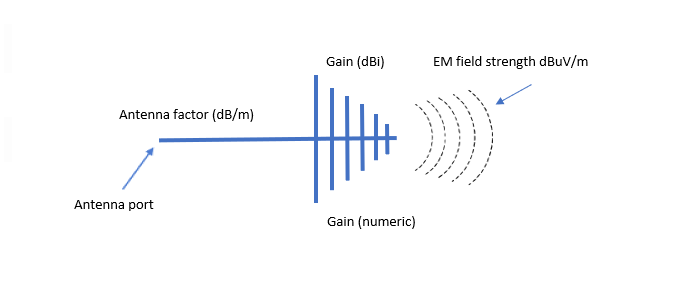There are various technical parameters associated with antennas which are commonly studied and defined; including gain, directivity, beamwidth (or beam area), aperture, antenna pattern, antenna temperature, and antenna radiation resistance. The antenna factor is rarely included as one of the basic parameters of an antenna, as it is used almost exclusively in EMI testing when making radiated electric field strength (E-field) measurements. Antenna factor is the ratio of the incident electromagnetic field strength to the voltage (V or μV) at the antenna port.
\Large AF=\frac { E }{ V } =\frac { V/m }{ V } =\frac { 1 }{ m } ,\quad in\quad linear\quad form \newline \newline \Large AF=\frac { dB }{ m } ,\quad in\quad logarithmic\quad form\ \newline
Limitations of antenna factor
The antenna factor definition assume that the incident field strength is uniformed over the entire body (structure) of the antenna. In practice this assumption is not valid most of the time. The antenna factor holds for propagating plane waves (far field conditions), the polarization matched to the field. The antenna mismatch impedance is included in the Antenna Factor. So only the available voltage is measured at the receiver. In addition, since the gain of the antenna varies as a function of direction ofthe incoming field towards the antenna. If no direction is specified, the direction that is meant is always the direction of maximum gain.
In the download button below you can find AF data about the HL562E log antenna that is used in ECH.

